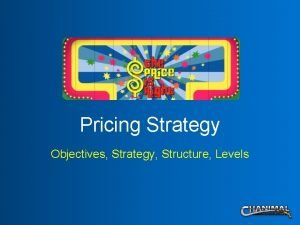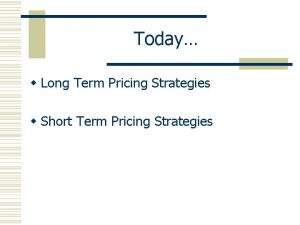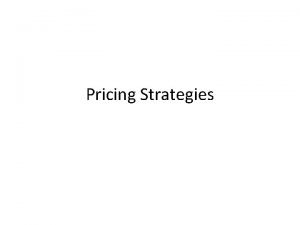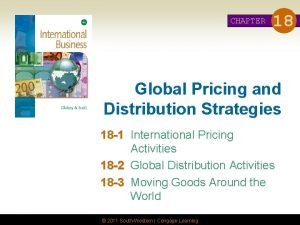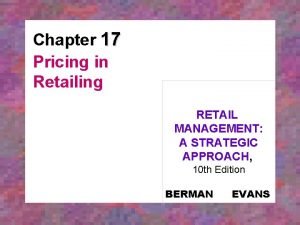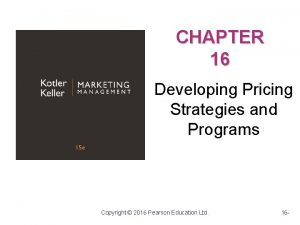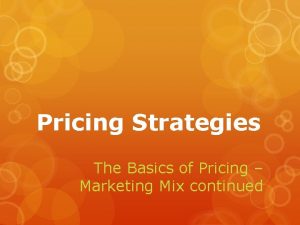The Marketing Mix Pricing Pricing Strategies l Price











- Slides: 11

The Marketing Mix Pricing

Pricing Strategies l Price skimming l l l A high price set to yield a high profit margin Long-term or short-term strategy (early adopters) Penetration pricing l Low prices are set to break into a market or to achieve a sudden spurt in market share

Pricing Strategies l Price leadership l l Price taking l l A small firm follows the price set by a price leader Predator or Destroyer pricing l l A large company (the price leader) sets a market price that smaller firms will tend to follow Firm sets a very low price in order to drive other firms out of the market – sole objective is to reduce number of competitors Discrimination pricing l Charging different prices to different customers for the same product or service

Pricing tactics l l Loss leaders Psychological pricing

Influences on the pricing decision l Costs of production l l Cost-plus pricing (cost + a mark-up) Price elasticity of demand

Cost-plus pricing l Level of mark-up depends upon: l l l Level of competition Price that customers are prepared to pay Firm’s objectives

Price elasticity of demand l P. O. D. = % change in quantity demanded % change in price l Price elasticity of demand can be elastic, inelastic or unitary

Price elasticity of demand l Elastic l l l Inelastic l l l % change in price leads to a greater % change in quantity demanded Number is greater than 1 % change in price leads to a smaller % change in quantity demanded Number is smaller than 1 Unit elasticity l Price change is exactly cancelled out by the change in quantity demanded so sales revenue stays the same

Determinants of PED l l l Necessity Habit Availability of substitutes Brand loyalty Proportion of income spent on a product Income of consumers

Significance of PED l Inelastic l l l Price rise always increases sales revenue & profit Price fall leads to lower sales revenue and profit Elastic l l Impact of a price increase is outweighed by relatively large % change in demand, so sales revenue decreases In the case of a price fall, demand increases, but need to understand costs of production in order to see if profits will increase

Difficulties in calculating & using PED l l Other factors not ‘remaining equal’ Competitors’ reactions Consumers’ reactions Market research – reliability of surveys
 Product mix pricing strategy
Product mix pricing strategy Product line width
Product line width Kilala bilang maximum price policy
Kilala bilang maximum price policy Product price placement promotion marketing mix
Product price placement promotion marketing mix Pricing tripod in service marketing
Pricing tripod in service marketing Pricing strategies in marketing
Pricing strategies in marketing Destroyer pricing
Destroyer pricing Chapter 26 pricing strategies answer key
Chapter 26 pricing strategies answer key What is differential pricing strategy
What is differential pricing strategy Pricing and distribution strategies
Pricing and distribution strategies Pricing strategies in retail management
Pricing strategies in retail management Target rate of return pricing
Target rate of return pricing





